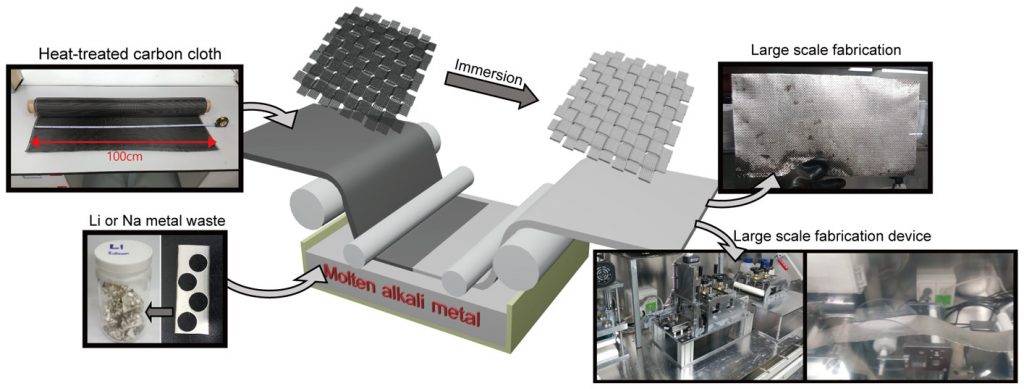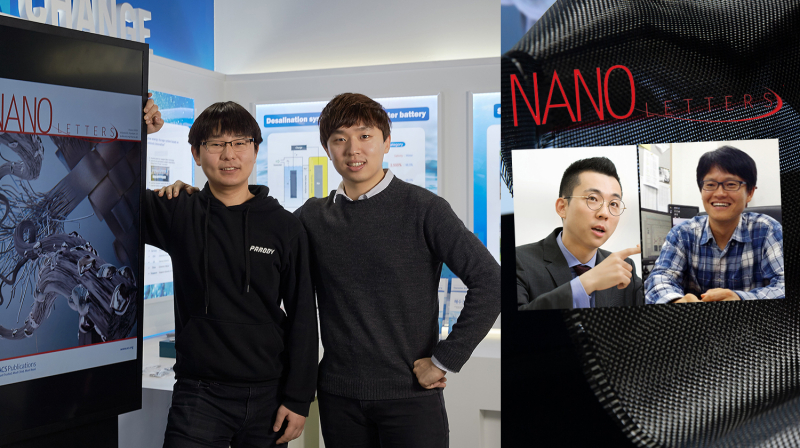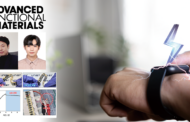Lithium (Li) and sodium (Na) metal have attracted great attention as ideal anode materials in high density battery applications owing to their higher theoretical capacities. Many efforts have been made to improve the performance of anodes made of Li or Na metal, yet many of these methods are difficult to scale up and thus cannot be applied in the production of batteries in practice.
In searching for solutions to those problems, a joint research team affiliated with UNIST has developed a high-performance metal electrode (carbon fiber-metal composite) through a process of penetrating liquid metal into fine gaps of carbon fiber. Using this process, the research team was also able to secure a mass-production technology for Li and Na metal electrodes.
This breakthrough has been led by Professor Youngsik Kim and Professor Hyun-Wook Lee in the School of Energy and Chemical Engineering at UNIST. The findings of this study has been selected as the Supplementary Cover of the February 2019 issue of Nano Letters. (Click HERE to view the March 13th issue of Nano Letters.)

Seawater batteries based on carbon fiber-metal composites.
In this work, the research team applied the sodium metal electrode that was mass-produced by this technology to a 10 kW seawater cell energy storage system (ESS). This was installed in the East-West power plant in December last year and just completed a test that went on for about a month.
“Unlike previous studies that focused on improving the performance of metal batteries, we succeeded in mass production of electrode materials for commercialization,” says Professor Lee As we have carried out tests after applying the electrode material to actual equipment, we expect this technology to contribute to commercialization of high-performance metal batteries.”
The metal electrode is thought to be the next generation cathode material because it is about 10 times larger in capacity than conventional graphite electrode and has a low-driving voltage. However, it has the fundamental problem of creating twig-like crystal (dendritic crystal) formation on surface of the electrode during battery operation, which leads to reduction of performance.

The schematic diagram of carbon fiber-metal composites.
To address this issue, the team fabricated a new metal electrode by machining carbon fibers to create fine gaps and impregnating metallic liquid to the gaps. In the composites with lithium or sodium metal impregnated between carbon fibers, the formation of dendritic crystals was controlled during battery operation. In turn, this improved the stability of the metal electrode and extended the life of the battery.
Because the metal liquid seeps into contact with the carbon fiber, production of an electrode only takes about 10 seconds. Carbon fiber is highly flexible as it is a type of fabrics like cloth, and this characteristic allows the electrode to be manufactured in various forms.
“As seawater cells utilize sodium ions in inexhaustible seawater, it is a new energy storage system that is irrelevant to resource depletion problem,” says Min-Ho Kim in the Combined MS/PhD Program in the School of Energy and Chemical Engineering at UNIST, the first co-author of the study. “Since we have developed electrodes to improve the battery performance and established mass production process, the commercialization of the seawater cell will soon be possible.”

Carbon fiber-metal composites, produced in just 10 seconds.
Because metal liquid penetrates upon contact with the carbon fiber, it takes about 10 seconds to make the electrode. Carbon fiber is a kind of fabrics like cloth, so it has excellent flexibility. By using this point, electrode shape can be freely manufactured.
“Seawater batteries are produced in rectangular pouch shape, which is easy to dip in seawater and easy to stack,” says Wooseok Go in the Combined MS/PhD Program in the School of Energy and Chemical Engineering at UNIST, the first co-author of the study. “Carbon fiber-metal composites could easily be made into various shapes, and the electrodes could be made to fit perfectly into a battery in the form of a rectangular pocket.”

Carbon fiber-metal composites.
“Seawater batteries, which use earth-abundant seawater (sodium) to generate electricity, have emerged as a promising alternative to existing rechargeable batteries,” says Professor Kim. “Through the recent development of high-performance electrodes to enhance battery performance, as well as the mass production process, it will be a major step forward in finding cures for incurable diseases.
Journal Reference
Wooseok Go, et al., “Nanocrevasse-Rich Carbon Fibers for Stable Lithium and Sodium Metal Anodes,” Nano Letters, (2019).






















